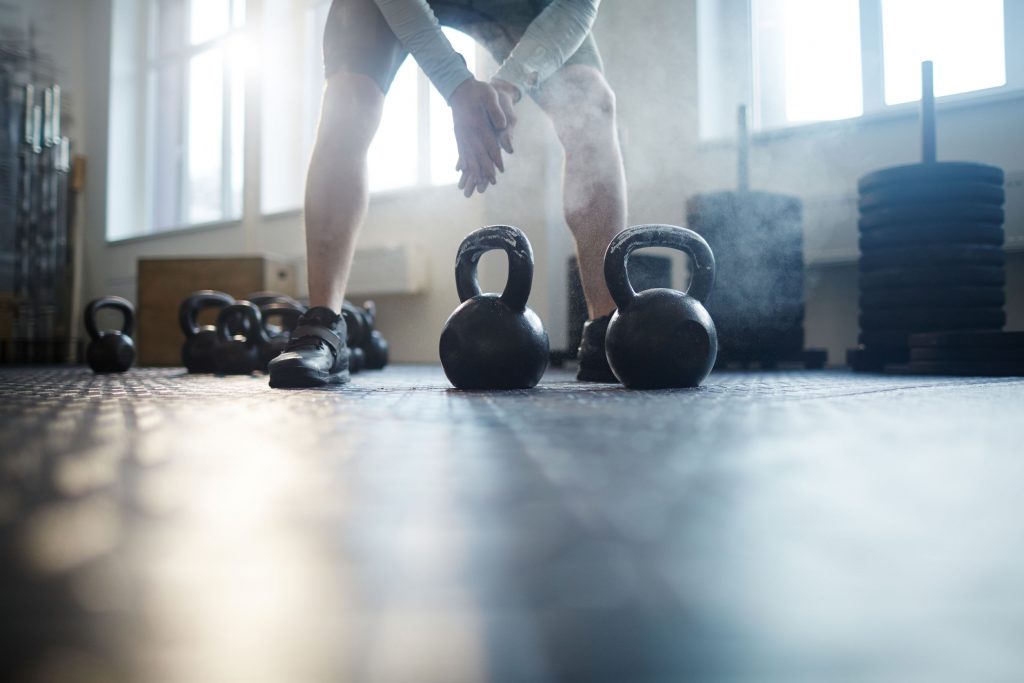In today’s guest post by strength coaches and physical therapists, Sam Spinelli and Jason LePage, they break down the hip hinge from beginner level to more advanced iterations.
Ain’t no party like a hip hinge party.
Enjoy.

Hip Hinge 2.0
Your hips have a powerhouse of potential for performance. In the realm of athletics hip extension is one of the most vital components for success. Through the progression of strategies to develop incredible hip extension, the start is to learn how to hip hinge. By hip hinging we can develop a potent supply of hip extension strength and movement capacity that will feed into our other exercises (jumps, cleans, snatches, etc.).
In a hip hinge we are moving our body through hip flexion and extension, while maintaining our spinal position in a neutral range. In most hip hinge exercises we are minimizing (not eliminating) knee movement, allowing for a focus to be placed on the hips; this is often referred to as a “soft bend” in the knees.
By having this soft knee bend, in contrast to a squat motion, we are going to encourage bending over. Due to this, understanding how to move through the hips and not the low back is vital to long term development.
While the hip hinge holds the opportunity to develop some awe-inspiring power, it is not the most simple movement, and for some people can be a real struggle to just pick up. That is where the following “hacks” come in. These are a collection of some of our top picks for learning the hip hinge motion.
Wall Referenced Hip Hinge
Back to Wall Hip Hinge
Wall Facing Hip Hinge
By using the wall we can have an external source of feedback guiding us. When we have our back to the wall, if you aren’t able to do a posterior weight shift and move your hips, you won’t reach the wall.
In contrast, when we face the wall, if you aren’t able to do a posterior weight shift you’ll make contact and not get very far.
Combine the two to get the best of both worlds and own the hinge pattern.
Handcuff Hip Hinge
With the weight held behind our back, it gives a reference of where to push into and guide the weight shift. As well, it places our shoulders in a more retracted and depressed position which cues to keep our chest proud through the movement.
Finally, with your arms secured behind your back you can feel if your lower back begins to round during the movement.
Kneeling Band-Assisted Hinge – Video link + Commentary
Struggle to move through just the hips and not bend the knees excessively or arch your back?
This variation will be a huge help.
The tall kneeling position temporarily eliminates the ankles which brings the focus to the hips! For this drill, simply try to sit your butt onto your heels. If you are struggling to move at the hips, the band will assist that movement to show you what it feels like to perform a hinge.
Some repetition here will help your body sense what the hinge feels like before moving on to a standing strategy.
Foam Roll Assisted Single Leg Hinge – Video link + Commentary
With this hip hinge hack, we transition to a single leg to hone the mechanics for unilateral hinging. In this variation, the foam roller functions as an external cue that allows you to create tension using the entire body as well as increase the stability of the movement allowing you to move slower if needed.
In most people, the foam roller will fit nicely between the foot and hand and is a solid option if you are struggling with a single leg variation of the hinge prior to loading the movement pattern.
Once you’ve begun to hone the hinge pattern, it’s time to start loading it up and building a monstrous posterior chain. Below are some of our top picks for beefing up your training program and solidifying your backside.
Pull Through
Banded Pull-Through
Pull-Through Added Band Resistance
Transitioning from the hip hinge hacks to loading can be challenging for some people. That is where the pull through can be utilized perfectly.
The pull through is an excellent exercise for novices to begin loading the hip hinge as it helps to give great feedback through the cable/band pulling your hips and weight in the direction we want them to move. As well, due to the direction of pull, their is a greatly reduced amount of loading on the back, making it a very safe exercise to begin with.
For those of you who are more advanced, the pull through can still be a great option for loading the hamstrings and glutes without putting as much stress on the low back/erectors. If you find yourself struggling with having enough load, consider adding in a band for additional loading.
Elevated Deadlift
The deadlift is arguably one of the best movements in general – challenging most of the body in one motion, but it is in particular one of the best posterior chain exercises.
It allows for great loading of the hamstrings, glutes, and lumbar extensors while also incorporating much of the upper back musculature to stabilize the spine and shoulders. Most people struggle to effectively pull off the floor and by elevating the bar a few inches we can get into a much better starting position and focus on good mechanics.
Hip Thrust
When we talk hip hinge, we are generally referencing movements that have us in an upright posture. However, there are some fantastic exercises that use the hips that are not done being upright. The hip thrust is an incredible strength movement for the glutes and other posterior chain muscles and really helps those who have a need for horizontal force production – such as most field sport athletes.
Landmine 1-Leg SLDL
Working the posterior chain on a single leg can put a big focus on hip, knee, and ankle stabilization, while also reducing how much loading is on the lower back and placing more on the legs and hips.
However, many people struggle initially learning the mechanics of the 1 leg SLDL. Utilizing the landmine we are able to take advantage of the arcing motion of the bar and also the increased amount of structural stability to have a slightly easier time learning the motion.
KB Swing
The KB swing offers us the ability to ramp up the speed of the movement and incorporate some higher rate of force development. This can be very beneficial for all athletes and incorporated as a primer before heavy work. As well, the KB swing can be a great exercise to use in a conditioning format as it can really get the heart rate going.
About the Authors
Sam Spinelli
Sam Spinelli is cofounder of The Strength Therapist, a company devoted to educating people about strength training for rehab and performance.
Coming from the great white north of Canada, Sam spent 5 years working with high level hockey as a strength and conditioning coach. Currently he has taken up a nomad status in the United States to pursue his doctorate of physical therapy and hang out with really smart people (Like Tony G).
Outside of spending his time reading research papers and drinking coffee, he is a competitive strength athlete in sports such as powerlifting, weightlifting, and strongman.
Website – thestrengththerapist.com
Instagram – https://www.instagram.com/
Facebook – https://m.facebook.com/The-
Twitter – https://mobile.twitter.com/
Jason LePage
Jason LePage is a Doctor of Physical Therapy student at Quinnipiac University and the founder of PrimePhysioFitness. For the last 4 years, Jason has worked as a personal trainer and group fitness instructor with a passion for promoting fitness and wellness for all ages. Outside of school and work, Jason loves playing a variety of sports including basketball, tennis, and volleyball and spending time with his family. If you want to learn more from or connect with Jason:






 posterior chain strength preventing injuries.
posterior chain strength preventing injuries.



